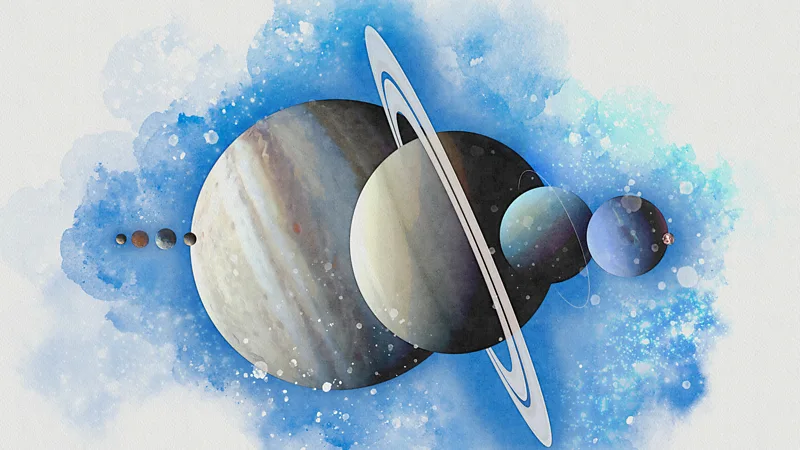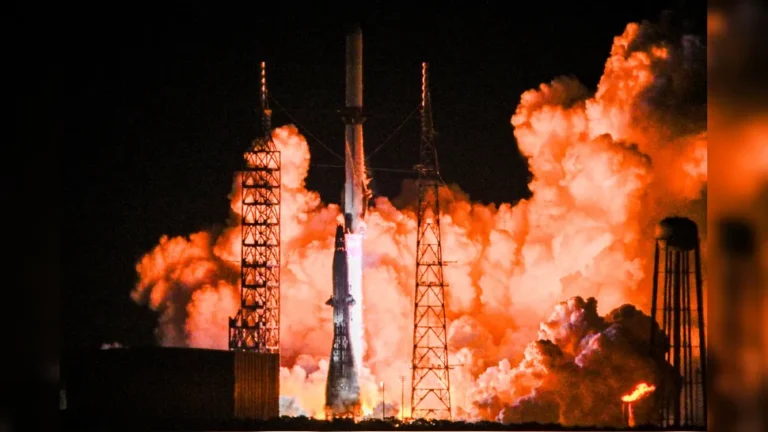Seven planets are lining up in the sky
This February, the night sky will host a rare celestial event: the alignment of seven planets, including Mercury, Venus, Mars, Jupiter, Saturn, Uranus, and Neptune. Such alignments, while visually spectacular, also offer valuable insights into our Solar System’s dynamics.
A Rare Celestial Display
Throughout January and February, six planets have been visible in the night sky. On February 28, Mercury will join this group, creating a rare seven-planet alignment. Observers can witness this event during clear nights, with the planets forming an arc across the sky due to the flat plane of their orbits.
Understanding Planetary Alignments
The eight major planets orbit the Sun on the same flat plane but at varying speeds. Mercury, the closest to the Sun, completes its orbit in just 88 days, while Neptune, the farthest, takes 165 Earth years. These differences occasionally result in multiple planets aligning on one side of the Sun, visible from Earth as a planetary parade.
Observing the Event
The brighter planets—Mercury, Venus, Mars, Jupiter, and Saturn—are visible to the naked eye. Uranus and Neptune, however, require binoculars or a telescope. This alignment provides an excellent opportunity for both amateur and professional astronomers to observe the celestial bodies together.
Scientific Significance of Alignments
While some theorize that planetary alignments could influence Earth or solar activity, the scientific consensus largely disputes this. Notably, Frank Stefani, a physicist, suggested that the combined tidal forces of Venus, Earth, and Jupiter might drive the Sun’s 11-year activity cycle. His theory posits that these forces could induce Rossby waves inside the Sun, potentially impacting solar weather. However, many scientists, including Robert Cameron from the Max Planck Institute, argue that solar activity is driven by internal solar processes.
Practical Applications of Alignments
Planetary alignments have practical benefits, particularly for space exploration. The gravitational pull of planets like Jupiter can be used to slingshot spacecraft, reducing travel time to distant destinations. This technique was famously used during NASA’s Voyager missions in the late 1970s. The alignment of Jupiter, Saturn, Uranus, and Neptune enabled the twin Voyager spacecraft to visit all four outer planets in a relatively short period.
Exploring Beyond the Solar System
Alignments are not just useful within our Solar System. They play a crucial role in the discovery and study of exoplanets. The transit method, where an exoplanet passes in front of its host star, allows astronomers to detect and study these distant worlds. For instance, the Trappist-1 system, located 40 light-years from Earth, contains seven Earth-sized planets that transit their star, providing valuable data on their atmospheres and potential habitability.
Gravitational Lensing and Cosmic Exploration
Gravitational lensing, a phenomenon where the gravity of a large galaxy or cluster magnifies the light from a more distant object, is another critical application of alignments. This technique has allowed astronomers to observe some of the Universe’s most distant galaxies and stars, such as Earendel, the farthest known star, whose light has traveled billions of years to reach us.
Novel Uses of Alignments
Alignments also offer unique opportunities to search for extraterrestrial life. In 2024, graduate student Nick Tusay utilized planetary alignments in the Trappist-1 system to look for interplanetary communications. Although the search yielded no results, it highlights the potential of using alignments for innovative scientific inquiries.
The upcoming seven-planet alignment is more than a visual spectacle; it serves as a reminder of the intricate mechanics of our Solar System and the vast possibilities of cosmic exploration. Whether for scientific discovery or simple stargazing, this rare event offers a chance to connect with the universe on a grand





